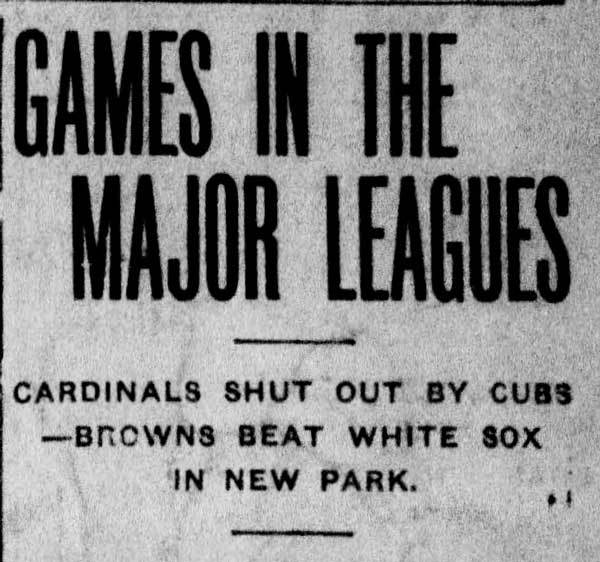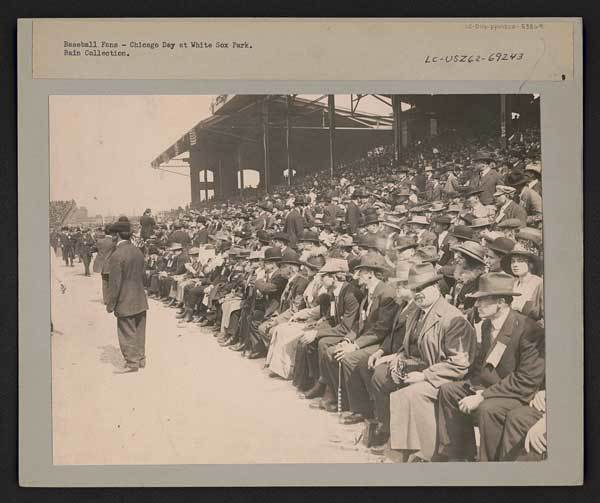
The Cairo Bulletin, July 2, 1910 (courtesy of the Library of Congress)
"Games in the Majors," reads the July 2, 1910, Cairo Bulletin with a list underneath of Illinois baseball news for the previous day: "Cardinals Shut Out By Cubs—Browns Beat White Sox in New Park." July 1 had been the first game in the new White Sox Park, later Comiskey Park, and the Sox had been shut out 2-0.
Though overshadowed for most of its history by Wrigley Field, the baseball cathedral on the North Side of the city, Comiskey Park would become an important Chicago South Side landmark.
The park's construction marked the end of a longer process to make the White Sox a marquee baseball club. Charles Comiskey had a fairly successful career playing baseball in the 1880s and 1890s. While serving as a player and manager for the Cincinnati Reds, Comiskey purchased the Western League's Saint Paul baseball franchise. By 1901, the Western League had become the American League, and Comiskey moved his team from Saint Paul to begin anew in Chicago as the White Sox.
1906 was a breakthrough year for the Sox after winning the World Series in six games, upsetting a superior Chicago Cubs team. The Thirty-ninth Street Grounds, home of the Chicago Cricket Club, that Comiskey had leased for the White Sox would not suit a World Series caliber club. Comiskey began planning for a new park.
In 1908, Comiskey purchased land on 35th Street and construction began on Comiskey Park a year later. This was part of a larger trend in baseball that saw ten new stadiums, including Wrigley Field and Fenway Park, built across all of America's major baseball cities.
Over its eighty years in operation, Comiskey Park hosted events including the Negro League baseball games of the Chicago American Giants, NFL games, championship boxing matches, and soccer games. It is best remembered, however, as the home of the White Sox. Comiskey Park saw the Sox win the World Series, four games to two, in 1917 over the New York Giants. They won all three games played at Comiskey and clinched in game 6 in New York.
 Comiskey Park c. 1912 (Courtesy of the Library of Congress)
Comiskey Park c. 1912 (Courtesy of the Library of Congress)
The Sox also appeared in the 1919 World Series, which proved disastrous for the franchise because several Sox players colluded with gamblers to throw the series. Despite decline after the scandal-marred 1919 season, the team and park remained important to South Side businesses, perhaps most prominently McCuddy's Tavern that opened the same year as the ballpark.
The Sox rose again in 1959, returning to the World Series, but fell to the Los Angeles Dodgers in six games—the decisive sixth game played at Comiskey. Comiskey Park was a symbol of baseball in Chicago for eighty years before being demolished and replaced by new Comiskey Park (now Guaranteed Rate Field) in 1991.
Jacob K. Friefeld
Research Historian